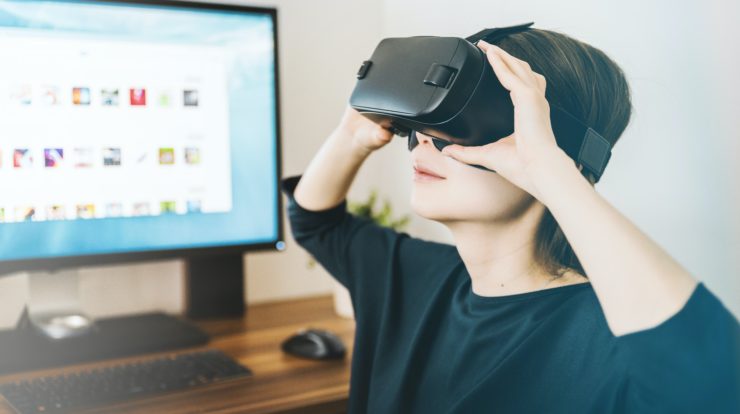
Earlier this year, in the midst of the COVID-19 pandemic, the world’s first completely virtual art museum, VOMA (Virtual Online Museum of Art), opened its “doors.”
More recently available on more devices, VOMA offers not only high-quality images of a variety of art pieces but also a virtual museum building, complete with an outdoor sculpture pavilion, that gives the works spatial context.
3D virtual museum tours aren’t new—I posted a few earlier this year—but VOMA is unique in that it’s a permanent museum without any kind of physical building that really tries to replicate, as much as possible, the feeling of actually standing in front of the world’s greatest works of art. And it’s available online for PC, Android, Apple, and even some VR systems.
Why a Virtual Museum?
Last week I attended a virtual talk and tour with founder Stuart Semple and director Lee Cavaliere, and it was fascinating to hear about the inspiration and process behind VOMA.
While Semple and Cavaliere’s team decided to go live with the museum early due to the global pandemic, VOMA has been in the works for much longer than that, and the intentions behind it are much further reaching.
Semple noted how galleries and museums have been trying to engage online audiences for a long time and have made renewed efforts during the COVID-19 crisis, but they’ve been slow to find real innovation. “They’re late to every party,” he said, and many of them have just been trying to utilize basic website formats, which don’t have the same effect as a virtual display space like VOMA.
The new museum isn’t just about creating another way for art lovers to experience art; it’s also about ownership and accessibility. In the talk, Cavaliere discussed the fact that the art world is “so out of reach for so many people.” While some have the ability to hop on a plane and go to the Louvre, others will never have the chance to see most, if any, of the world’s greatest art pieces in person.
VOMA doesn’t completely remove these limitations, but it does allow anyone with an internet connection to experience art in what the museum’s creators argue is a much more personal way than has previously been available. And because patrons can access the museum for free from anywhere, there’s almost a sense that they have some part in its ownership. Semple and Cavaliere plan to further expand this feeling by allowing museum visitors to make suggestions and have a say in the way the virtual institution is run.
Ultimate Freedom
As long as they can get high quality images and permission to use them, the VOMA team can show anything. They’re not even limited by a finite amount of space or a particular configuration. “When you haven’t got a building to worry about, you’re mind-bogglingly free,” Cavaliere mused.
They plan to make full use of that flexibility, allowing the building to evolve over time and showing unique exhibitions, which could eventually even include digital recreations of lost and destroyed work. The possibilities are endless.
You can visit the online museum space here: https://voma.space/. Currently on display are exhibitions titled “As We Meet,” which is based around the theme of “Meetings, conversations and reunions between artists over the centuries,” and “Degenerate Art,” which recreates a 1937 Nazi exhibition that intended to discredit the work of artists the party deemed “degenerate.”
What Do You Think About VOMA?
Is it worth the effort and resources to create virtual art spaces? Should more galleries and museums go this direction? If you’ve visited VOMA, what was your experience like? Share your thoughts in the comments below.
